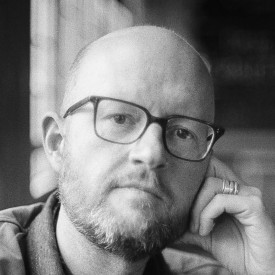Tim Robey is a film critic who has written features and conducted interviews for the Daily Telegraph’s arts pages. He appears regularly on BBC Radio4’s Front Row and Monocle FM Radio.
What’s the big idea?
Sometimes a movie flop can be blamed on bad timing, as tastes and tech evolve. Sometimes internal politics warp an artistic vision. And other times, a box office failure holds no bearing on the importance and quality of a film. Film history is full of failures to laugh about and learn from, as well as failures that contained hidden triumphs after all.
Below, Tim shares five key insights from his new book, Box Office Poison: Hollywood’s Story in a Century of Flops. Listen to the audio version—read by Tim himself—in the Next Big Idea App.

1. Some films come unstuck when caught in transitional moments for the medium.
The 1929 film Queen Kelly is arguably the last gasp of the silent era. It was a vehicle for Gloria Swanson, an enormous silent star in the late 1920s. She carried the entire $800,000 budget of the film, almost all of which was lost because of the chaos of its production and the confusion of its release. Her director was the already notorious Austrian emigrate Erich von Stroheim, and their relationship deteriorated horrendously as the shoot went on.
Swanson claimed that she had no idea how much sex Stroheim was bent on including in the film. She didn’t realize that in the latter part of the script, she was supposed to play a brothel madame in Africa, for instance. Stroheim, as was his habit, bullied and enraged all the actors by making them do take after take after take—often takes where they were completely naked. Eventually, Swanson snapped and had Stroheim fired off the film before it was finished, but the timing could hardly have been worse.
The shoot was going on in 1928, only a year after The Jazz Singer premiered as Hollywood’s first part-talkie, which was an enormous hit and pointed the way forward to the sound era. All the studios started racing to convert some of their silent films into talkies halfway through production and putting full talkies into production. Unfortunately, Swanson, Stroheim, and their producer, Joseph P. Kennedy (who Swanson was having an affair with), didn’t think sound would be anything more than a flash in the pan. They pressed on with Queen Kelly as a silent film. Then Stroheim was fired, and the work was left unfinished.
Certain things could have been done to try salvaging it. Perhaps 15 minutes of extra footage could have been shot to make the story hang together, or some of the existing scenes could have been converted to sound. But Swanson went off and made other films, including The Trespasser (which got her an Oscar nomination). By this point, Queen Kelly was three years late for release and it was still silent. No American distributor wanted to touch it. It barely got screened in Europe, either. Swanson lost that entire investment, was essentially dethroned as a viable star, and retreated from the limelight.
Many years later, Swanson made her comeback performing a virtual self-portrait in her role as Norma Desmond, the faded silent screen legend in Billy Wilder’s Sunset Boulevard. Cast for that movie in the role of Max von Mayerling, her butler and sinister projectionist, was none other than Erich von Stroheim.
2. A change in guard can set the stage for a flop.
Hollywood underwent something of a revolution in the late 1960s. The kind of films studios relied on as cash cows started to falter and fail. Meanwhile, a new generation of creatively gifted and independent-minded directors and filmmakers rose up through the ranks. A flop that illustrates this change of guard is Dr. Dolittle, a financially disastrous musical released by 20th Century Fox in 1967. Musicals were enjoying a huge wave of popularity in the mid-60s, thanks to the success of films like My Fair Lady, Mary Poppins, and especially The Sound of Music (Fox’s biggest hit at the time, released in 1965). The logic behind Dr. Dolittle was there, but the execution was not. Making the film was a nightmare.
“It was one of the many very costly, failed musicals in that era, which basically sent the genre into the doldrums.”
Everyone wanted their musicals to star Julie Andrews. She couldn’t be persuaded to take a role in an adaptation of the children’s books by Hugh Lofting about the doctor who talks to animals for the obvious reason that the lead is male. Instead, Fox chose Rex Harrison to lead the film. Harrison had won the Best Actor Oscar for My Fair Lady. However, Rex Harrison couldn’t really sing. It was once said that he had the vocal range of one and a half notes. For Dr. Dolittle, they wanted him to repeat the kind of speak-along-with-the-music style of singing that he had tried in My Fair Lady. They tried to get the same librettist, Alan Jay Lerner, to write the score, but he came up with nothing, so they had to fire him. His replacement was the much less experienced writer, Leslie Bricusse. The budget was climbing and that was even before they had to ship out a huge menagerie of different animals to the set. Harrison, who was not in the best mood throughout the shoot, had few humans to perform with. The majority of his co-stars were four-legged, if not winged, and they would force retakes by getting up to all sorts of shenanigans. Meanwhile, the film was being heavily oversold by Fox’s publicity department.
In desperation, Fox wined and dined the film onto the Oscar ballot, and it managed to get eight Oscar nominations, but this did not translate into success at the box office. From its budget of $17 million, the film grossed about half that amount. It was one of the many very costly, failed musicals in that era, which basically sent the genre into the doldrums. That coincided with a completely fresh approach to filmmaking represented by the likes of Francis Ford Coppola, Martin Scorsese, Peter Bogdanovich, and William Friedkin. Audiences had something new and gritty and serious to watch, ending the bloated frivolity of the musical era.
3. Sequels hold no guarantees.
Speed 2: Cruise Control from 1997 teaches an important lesson about sequels. Sequels can’t be expected to sail through commercially regardless of the thinking behind them, and with an afterthought of a script. The first Speed film from 1994 was a huge hit, earning $350 million at the box office from a budget of only $30 million. It didn’t cost much and made a big star of its leading man, Keanu Reeves, in much the same way that Die Hard had done for Bruce Willis. But Die Hard was a much easier film to turn into a sequel.
The concept for Speed was so specific: a bus, a bomb, 50 miles per hour, and so on. A sequel is already running into trouble if you must try finding a way to follow the first story. They tried many ideas, like a plane that must remain above a certain altitude. They also had ideas with submarines. The idea they settled on was a cruise ship. This is best explained by a dream that the director, Jan de Bont, had in which an ocean liner crashed into a tropical island jetty, causing total havoc. He thought that would be a grand finale, but the film didn’t have a beginning or a middle yet—and it also didn’t have a star. Keanu Reeves could not get enthused about a second Speed film on a cruise ship, and he was not wrong. He ducked the biggest payday of his career and decided to tour with his band instead. His co-star Sandra Bullock agreed to return and get a decent chunk of change, but production was left scurrying in search of a leading man.
“He ducked the biggest payday of his career and decided to tour with his band instead.”
They finally cast Jason Patric, not temperamentally well-suited to fronting a bombastic summer blockbuster. What compounded the problem was that they were in a huge hurry to get the film out for the summer of 1997. That slot in the release schedule was supposed to have been for Titanic, but it got shunted to December, leaving a big hole in their summer schedule. They needed something big and brash to fill it, and Speed 2 was their answer.
Unfortunately, it was wildly over-budgeted for a film with a dodgy concept and a new leading man. Everyone knew it was blood in the water, and the film was rejected at the box office, especially in America. It proved a franchise killer. There’s never been a Speed 3. These days, Sandra Bullock responds to questions about the sequel, saying, “Slow boat, slowly going toward an island. What was anyone thinking?”
4. Flops can create barriers to entry.
When we think about our contemporary obsession with superheroes, we probably date a lot of that back to the success of Spider-Man in 2002, and then Batman Begins in 2005, followed by both Iron Man and The Dark Knight in 2008. Those launched everything, but where were the female superheroes?
They didn’t appear until a decade later with films like Wonder Woman and Captain Marvel. A big part of that is because of Catwoman from 2004. While everyone was spending a lot of care on these male-fronted superhero franchises, Catwoman was rushed out with no care at all. It was one of the worst films in my book and a film that set Halle Berry’s career back horribly, directly after she had just won the Best Actress Oscar for Monster’s Ball and was commanding one of the highest paychecks a Black actress had ever had.
The idea of making a Catwoman movie was not the problem. It was the horribleness of how this one was handled. There was talk of doing a standalone Catwoman feature in the 90s after Michelle Pfeiffer starred in that role for Batman Returns, but she and Tim Burton could never quite get that off the ground. There were a few more attempts to do it with the likes of Sarah Michelle Gellar, Ashley Judd, and Nicole Kidman. But the one that actually came together was a Frankenstein’s monster of script drafts that were jammed together. The job of directing was given to Pitof, real name Jean-Christophe Comar, who’d made one feature in French before this and seemed out of his depth in almost every creative department.
“Women were mere sidekicks until the second half of the 2010s.”
The film was a laughingstock as soon as it came out. It was destroyed at the box office, opening the same weekend as The Bourne Supremacy, which did about three times the business. There have been conspiracy theories that Catwoman was set up to fail. It was so humiliating for all involved that whenever the concept of a female-fronted blockbuster came up, producers pointed to the failures of Catwoman and Elektra (the 2005 Jennifer Garner movie) to say, “No, this is what happens when you put a woman in spandex.” The boys were allowed to carry on starring in these huge franchises while the women were mere sidekicks until the second half of the 2010s. Even then, all new action heroines were white. Halle Berry drew the short straw with Catwoman.
5. Independent flops hit different.
If a small independent film flops, we assume that the financiers will get over it. But what if that production was required to be expensive because of the ambition of the screenwriting and scope of what the director was attempting? This was the case with Charlie Kaufman’s monumental 2008 opus Synecdoche, New York.
It starred Philip Seymour Hoffman in possibly his greatest role as the playwright Caden Cotard. The story focuses on a search for meaning involving a vast simulacrum in a disused Manhattan warehouse with hundreds of extras playing essentially every person Cotard has ever met. There was no way to get it made for anything less than about $20 million—not much money for a Hollywood blockbuster, but a lot of money for a philosophical character study called Synecdoche, New York. When the film came out, it left many critics scratching their heads, and it failed to reap a single Oscar nomination.
Unlike Kaufman’s previous screenplays for Being John Malkovich, Adaptation, and Eternal Sunshine of the Spotless Mind, it bombed at the box office in the bleak midwinter of 2008 when the economic crisis landed. Because Kaufman had directed the film, he took most of the flack and even more responsibility for its enormous financial failure. The only film that was doing well at that time was Iron Man, which was essentially a launchpad for the next 10 years of Marvel’s cinematic universe. But this was not a universe that Kaufman wanted to inhabit. He suddenly found it extremely hard to get any of his ideas off the ground or get any studios interested. It sent him into a creative funk so deep that the only way he could get his next project off the ground was by crowdfunding it.
The irony is that Synecdoche, New York is now regarded as Kaufman’s masterpiece. Perhaps it doesn’t really matter that the film lost money, but it did to Charlie Kaufman, and this is perhaps what makes him even more like his main character, the perpetually thwarted Caden Cotard, than he even realized when he was writing it.
To listen to the audio version read by author Tim Robey, download the Next Big Idea App today:































